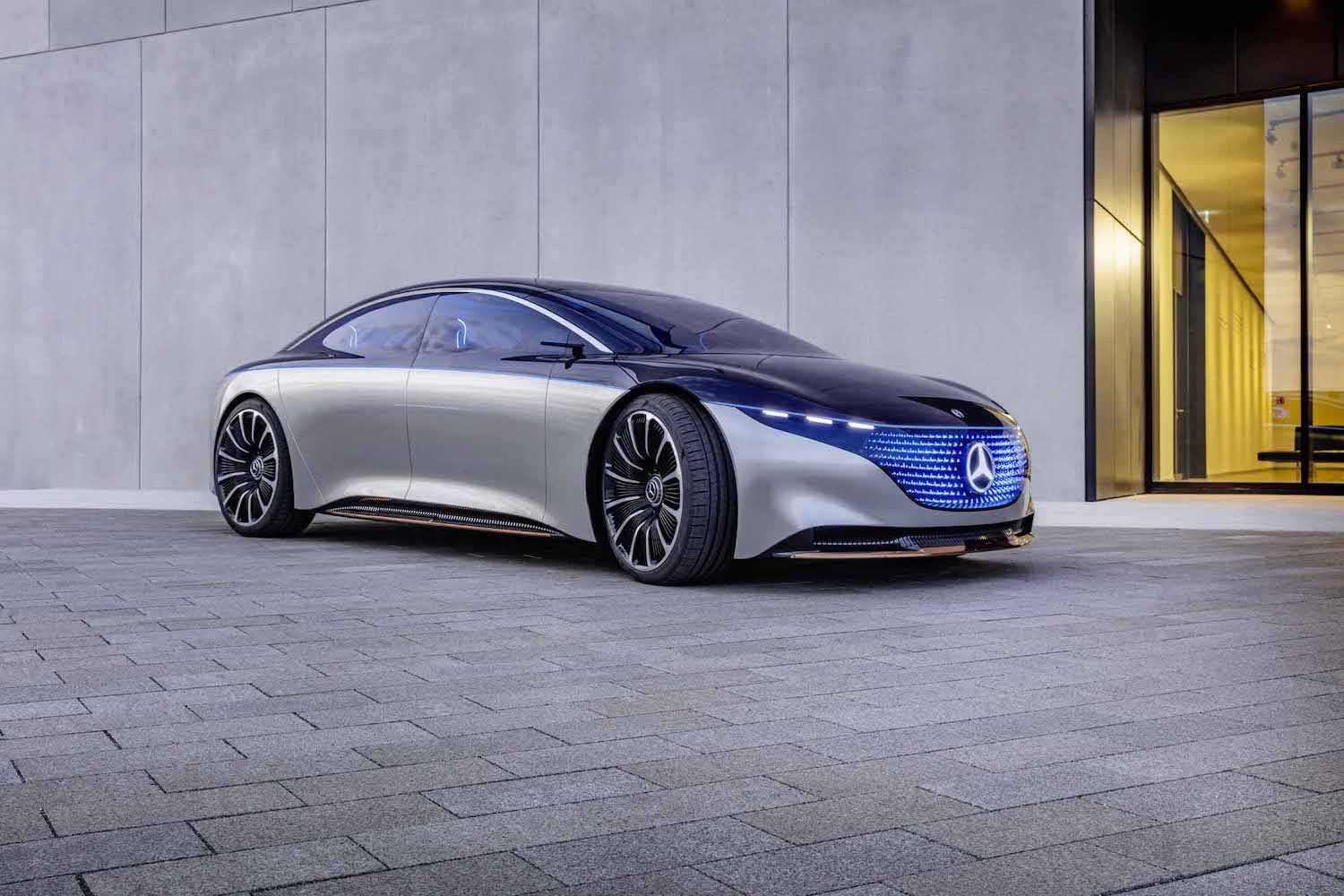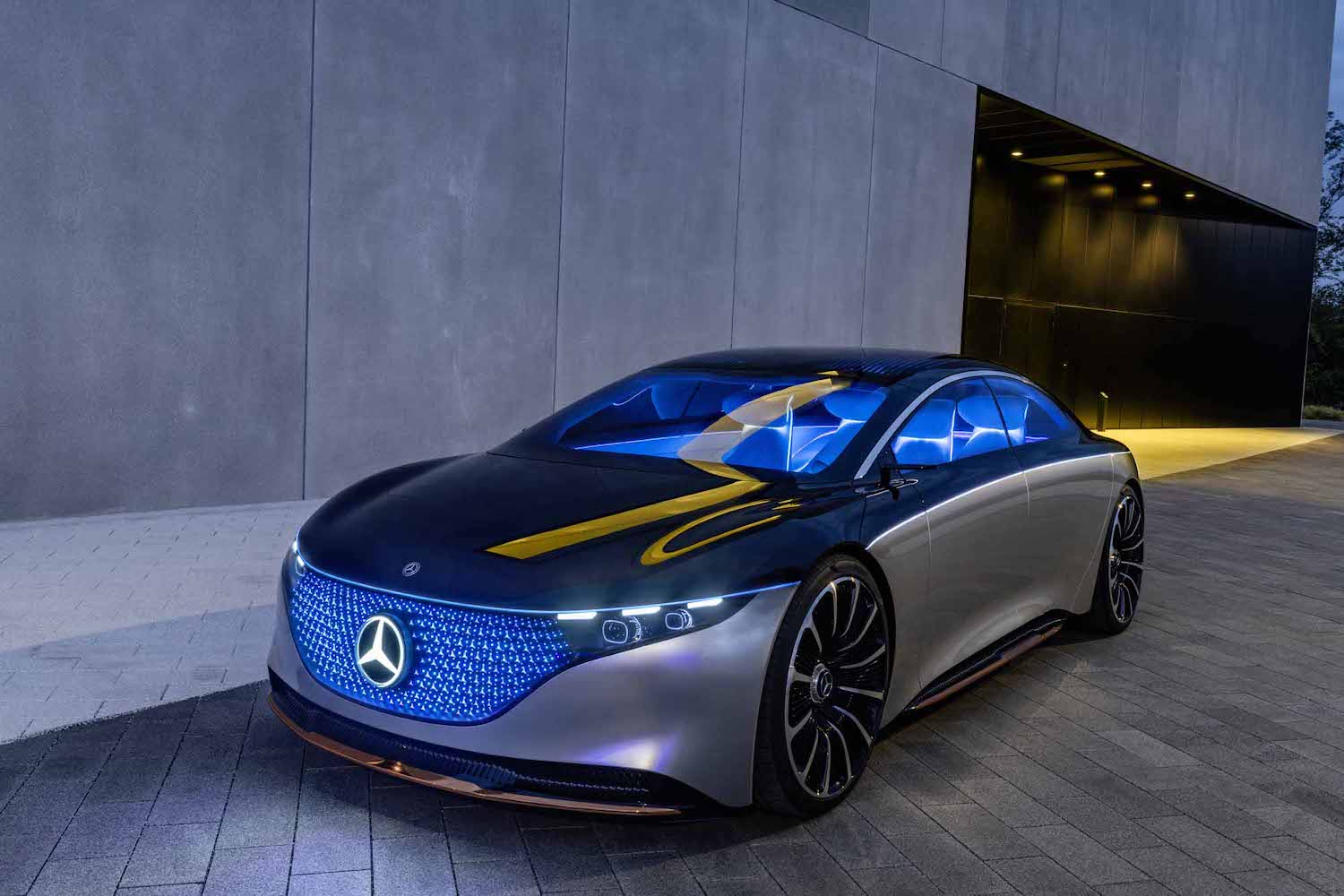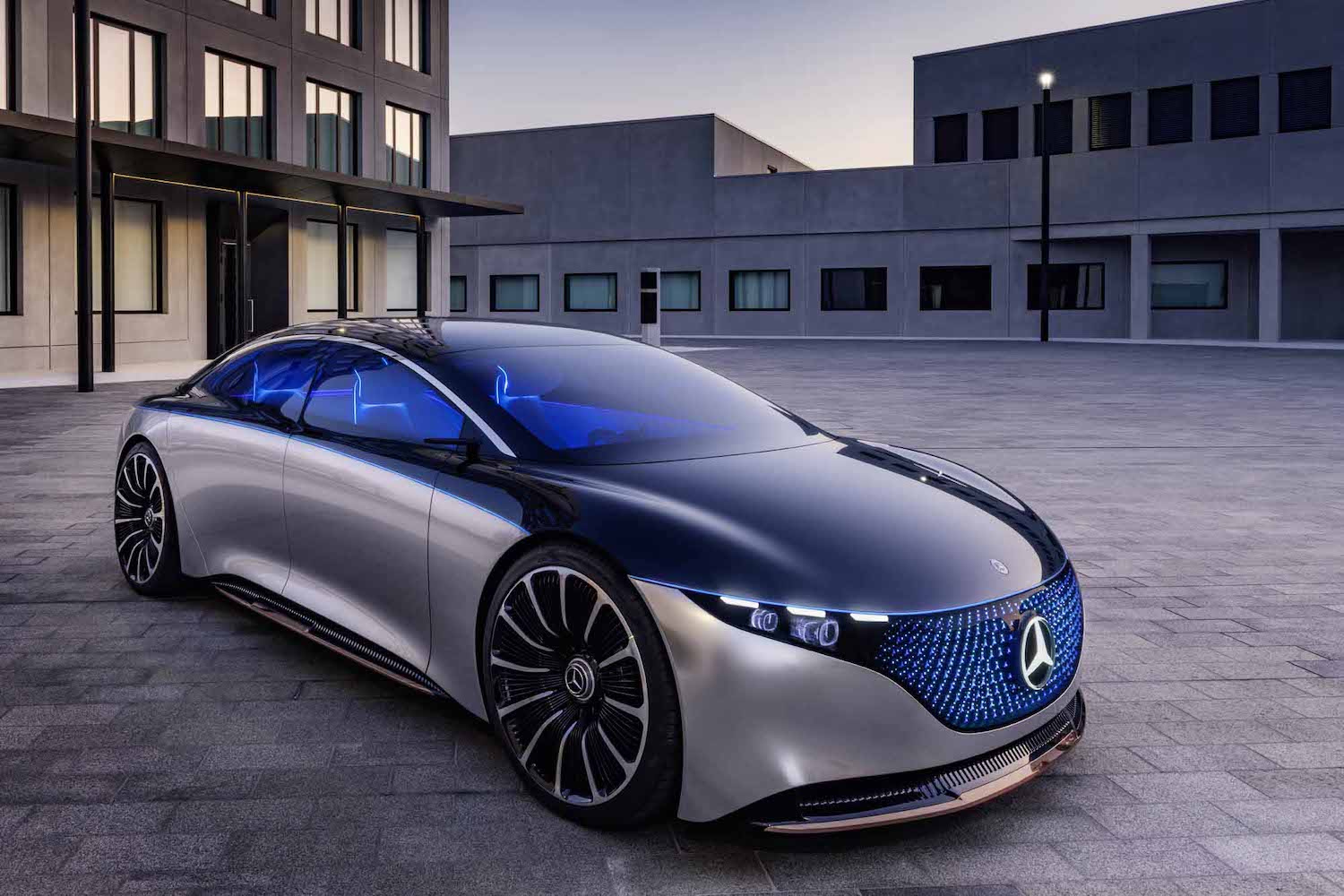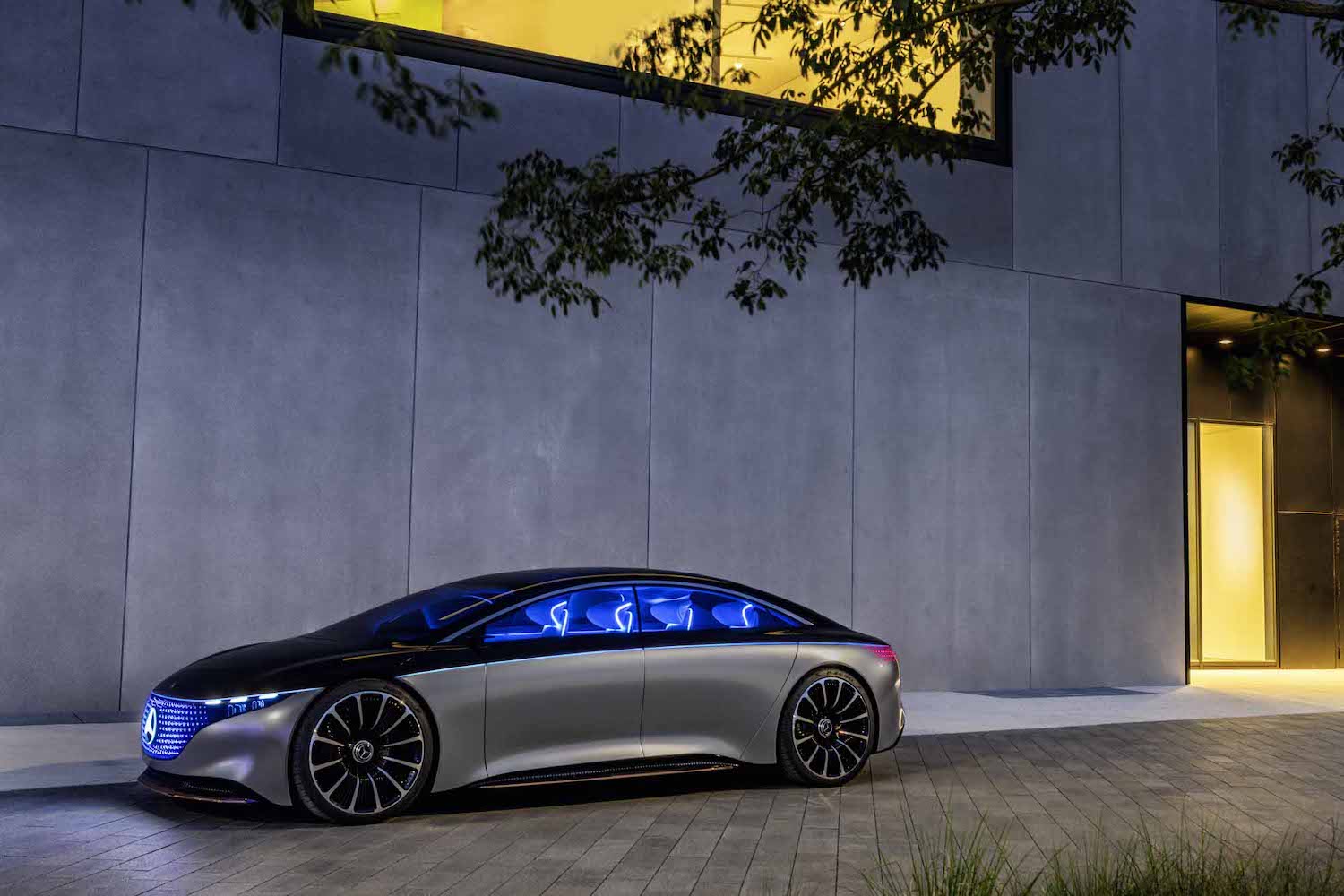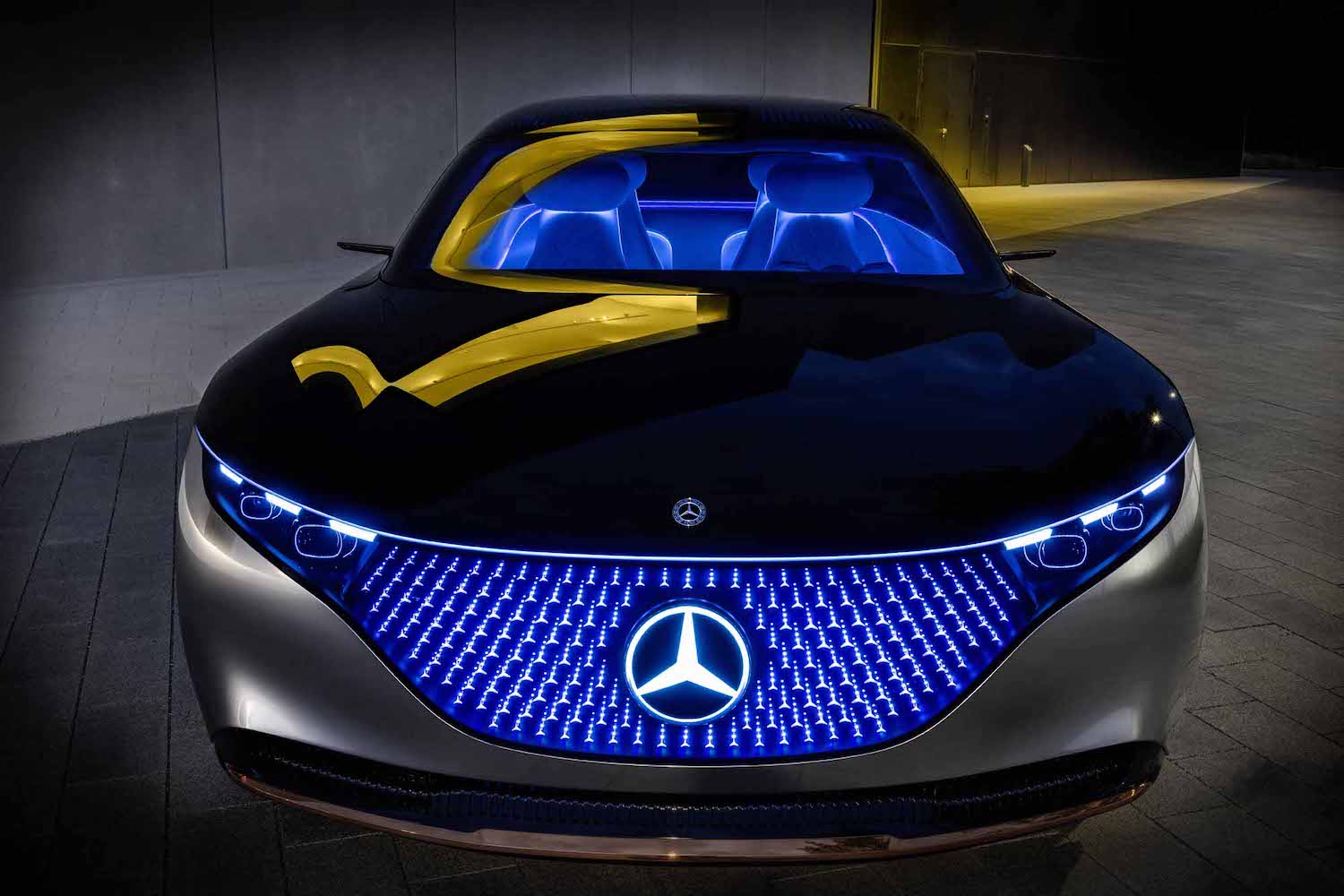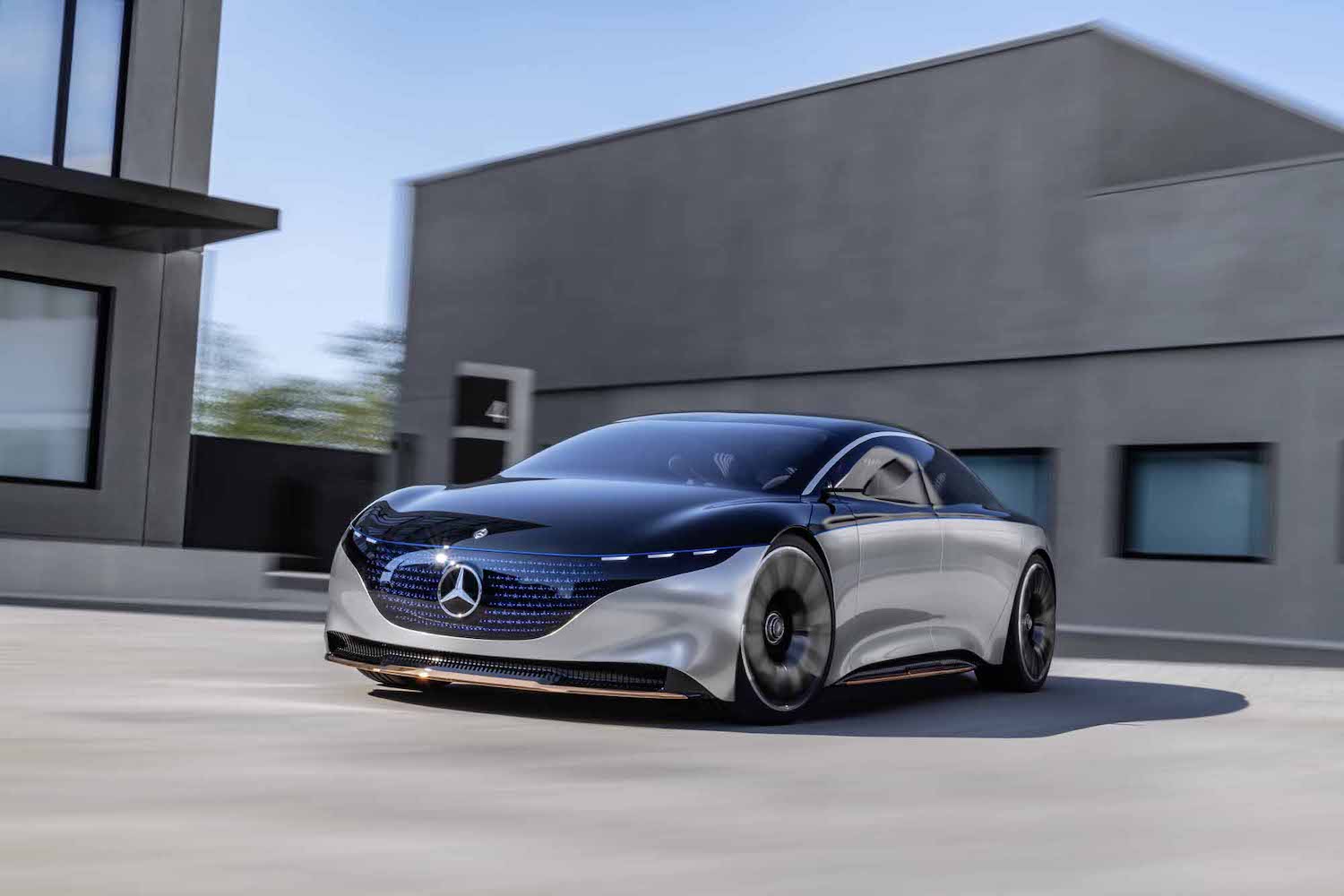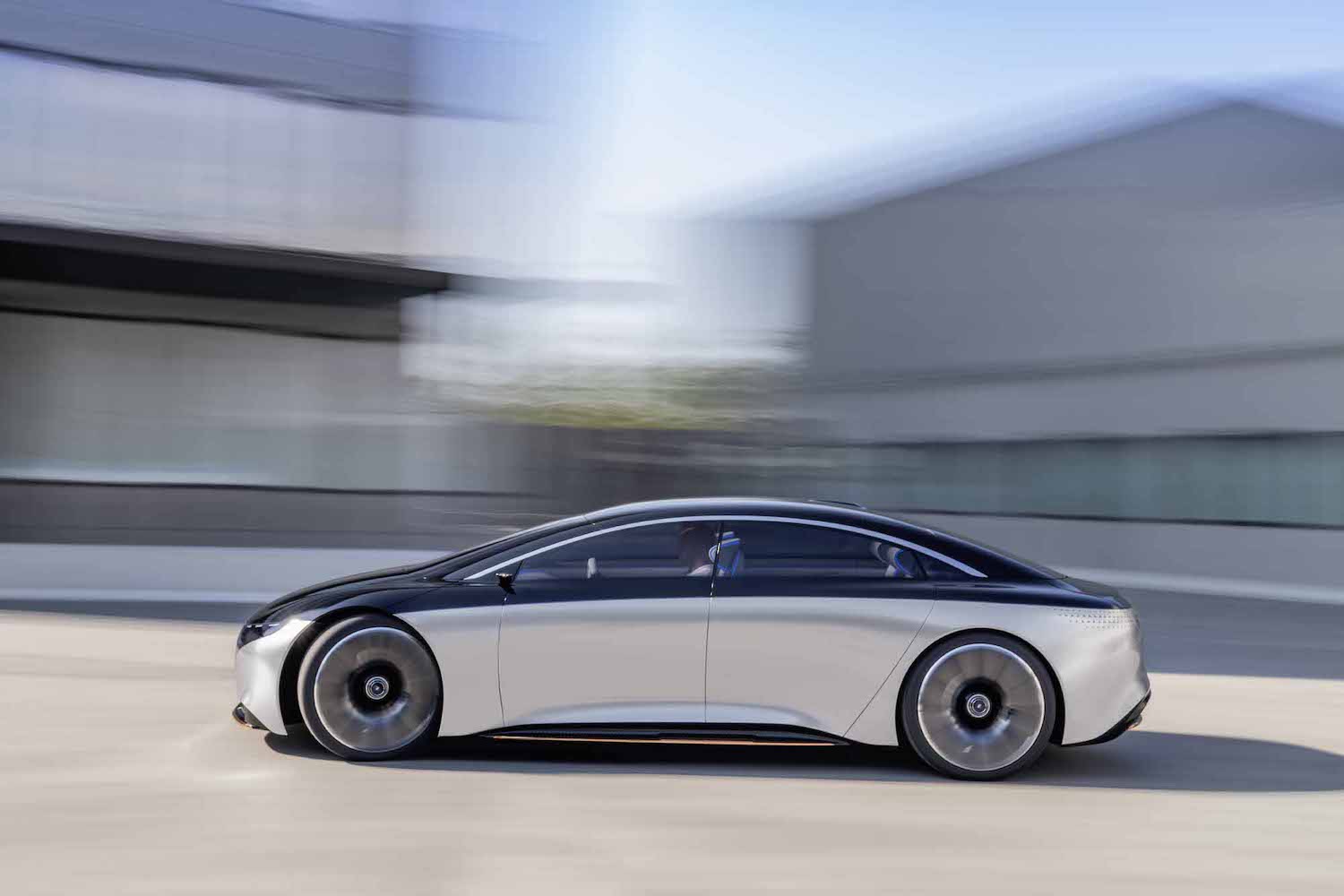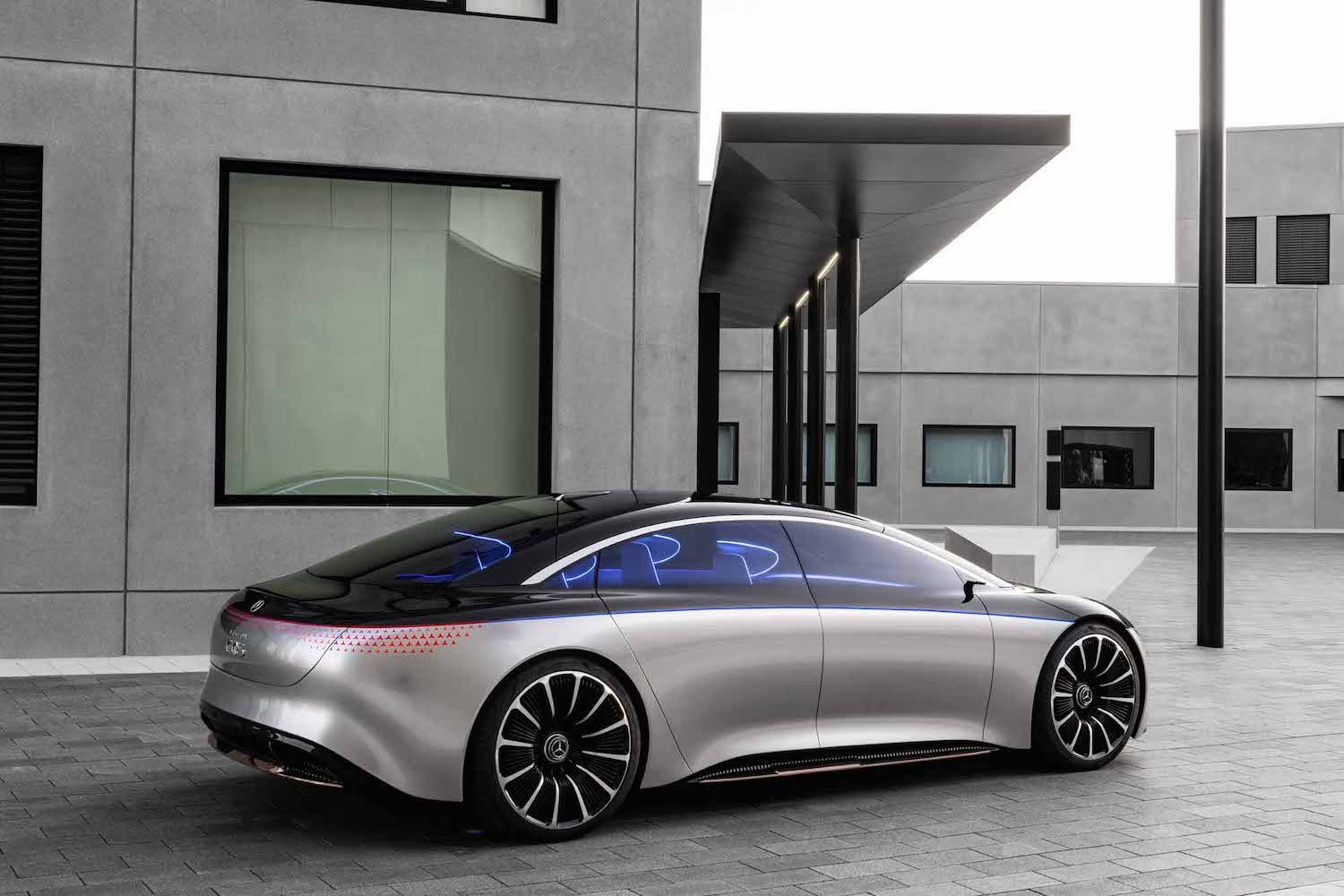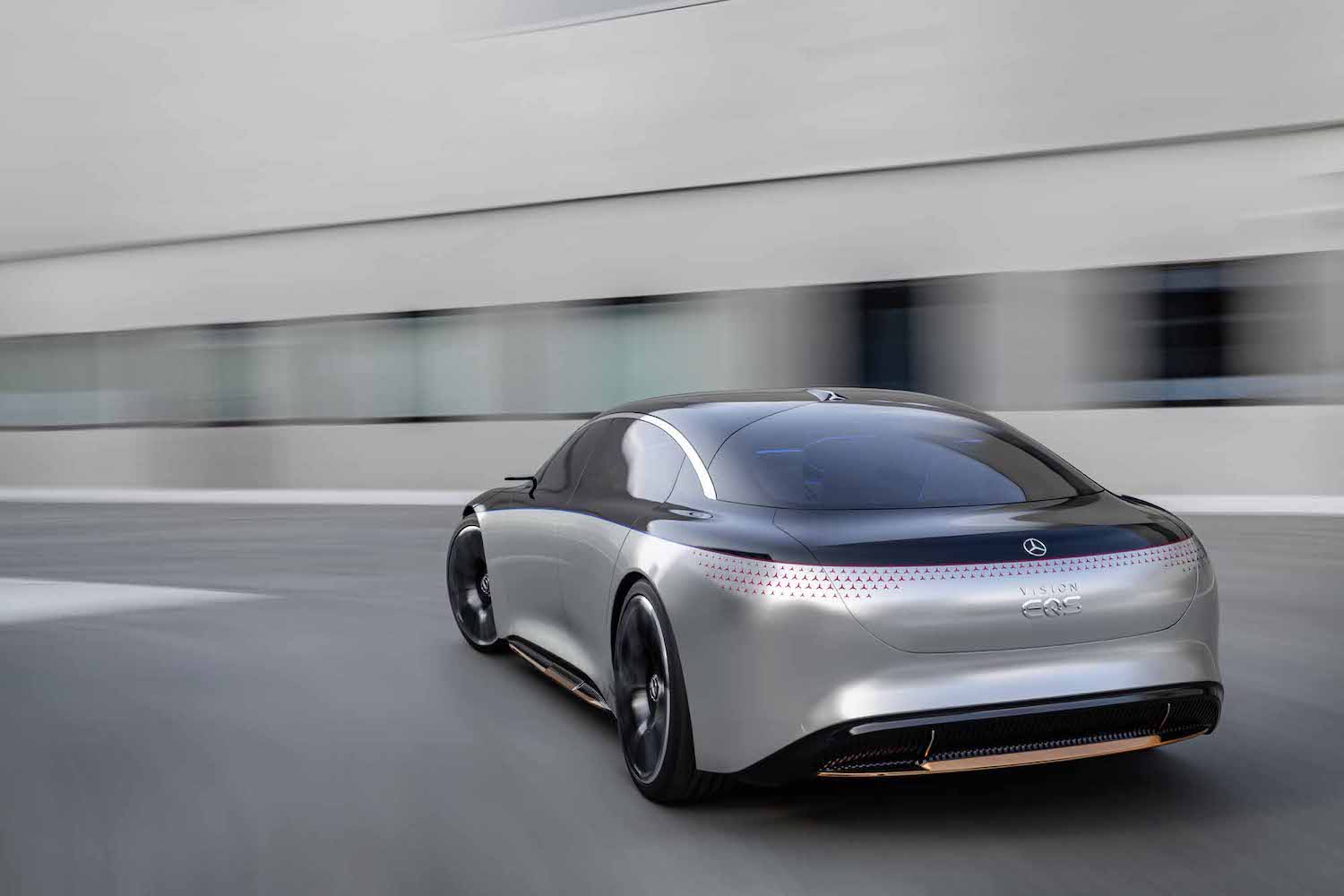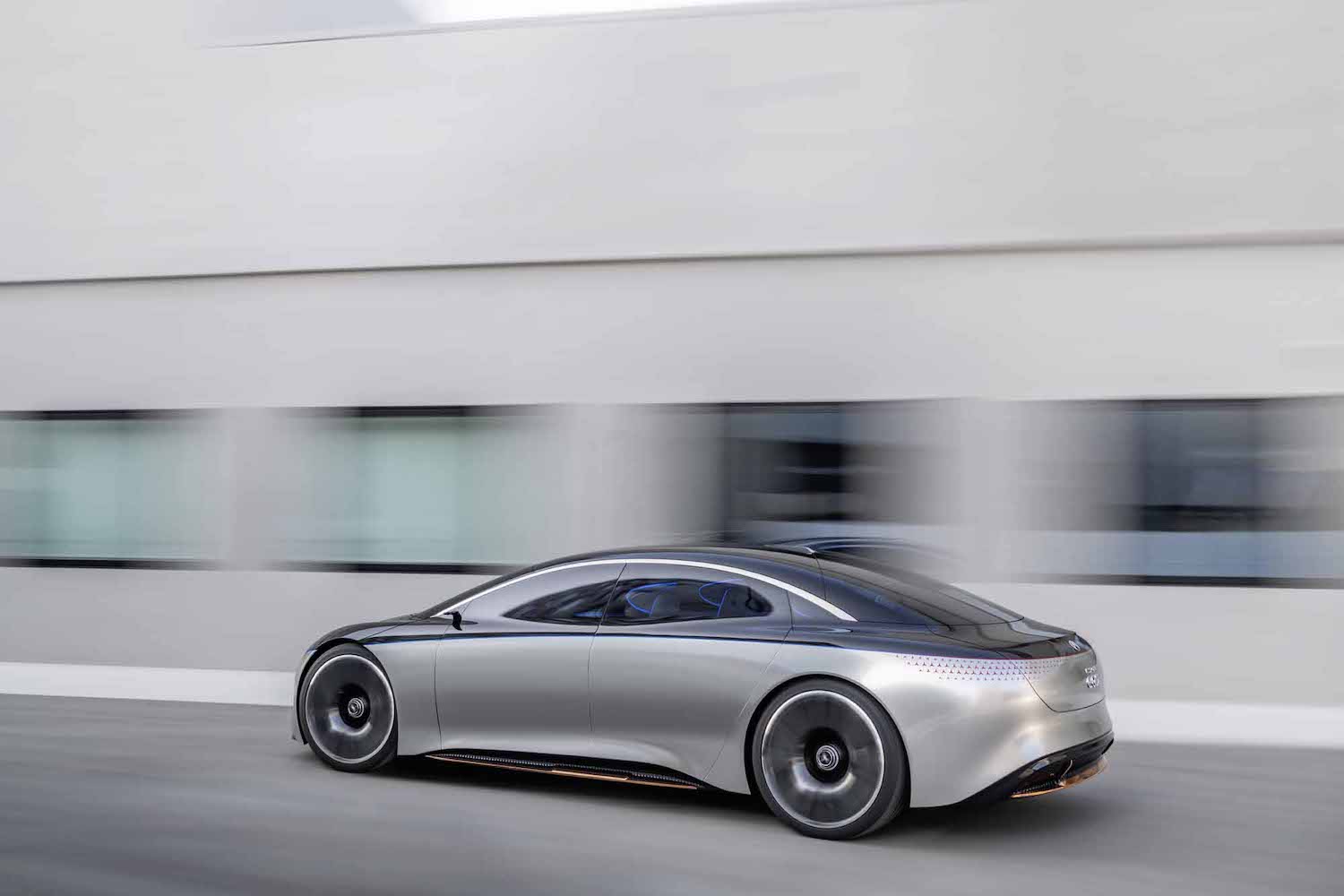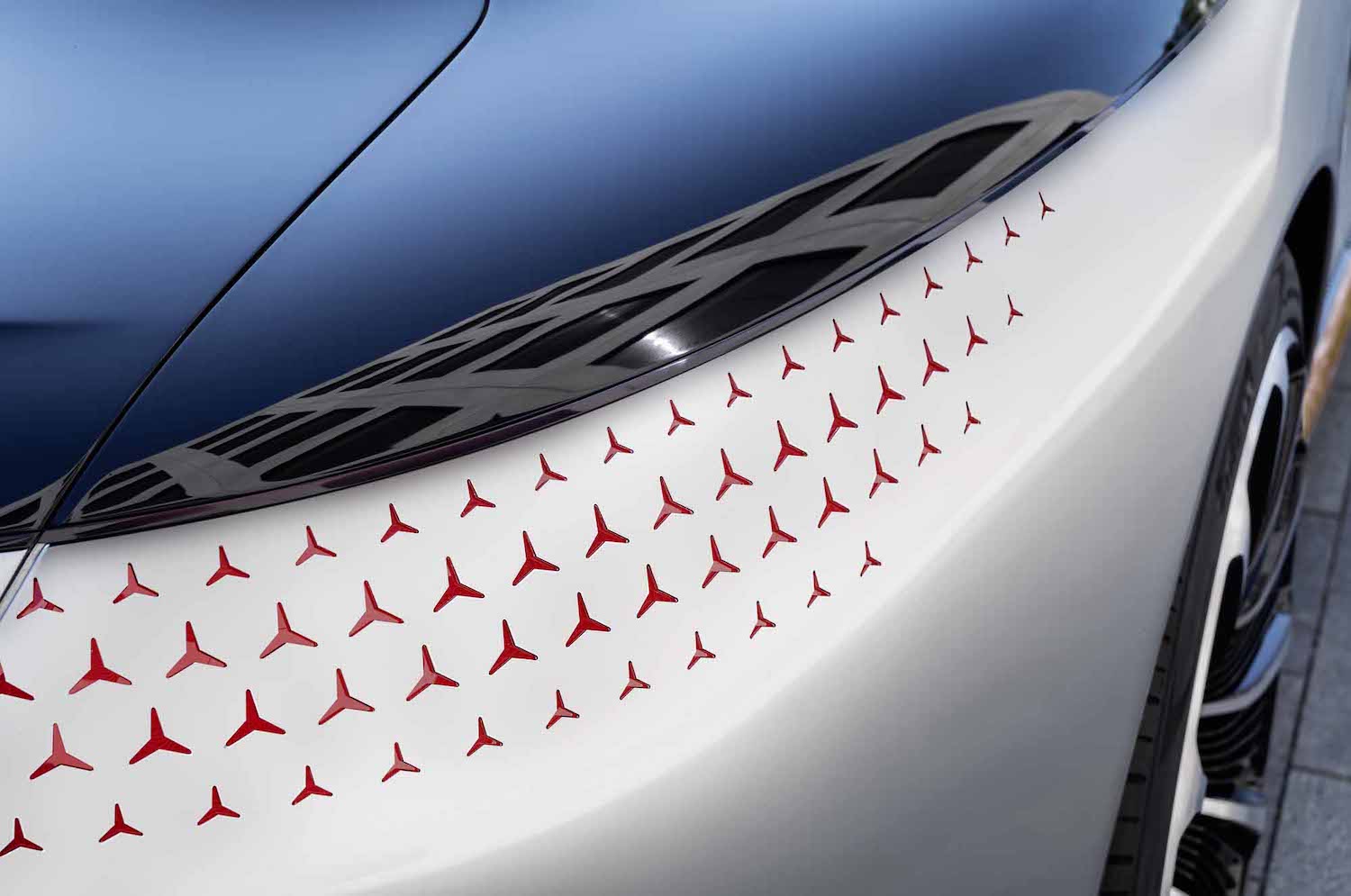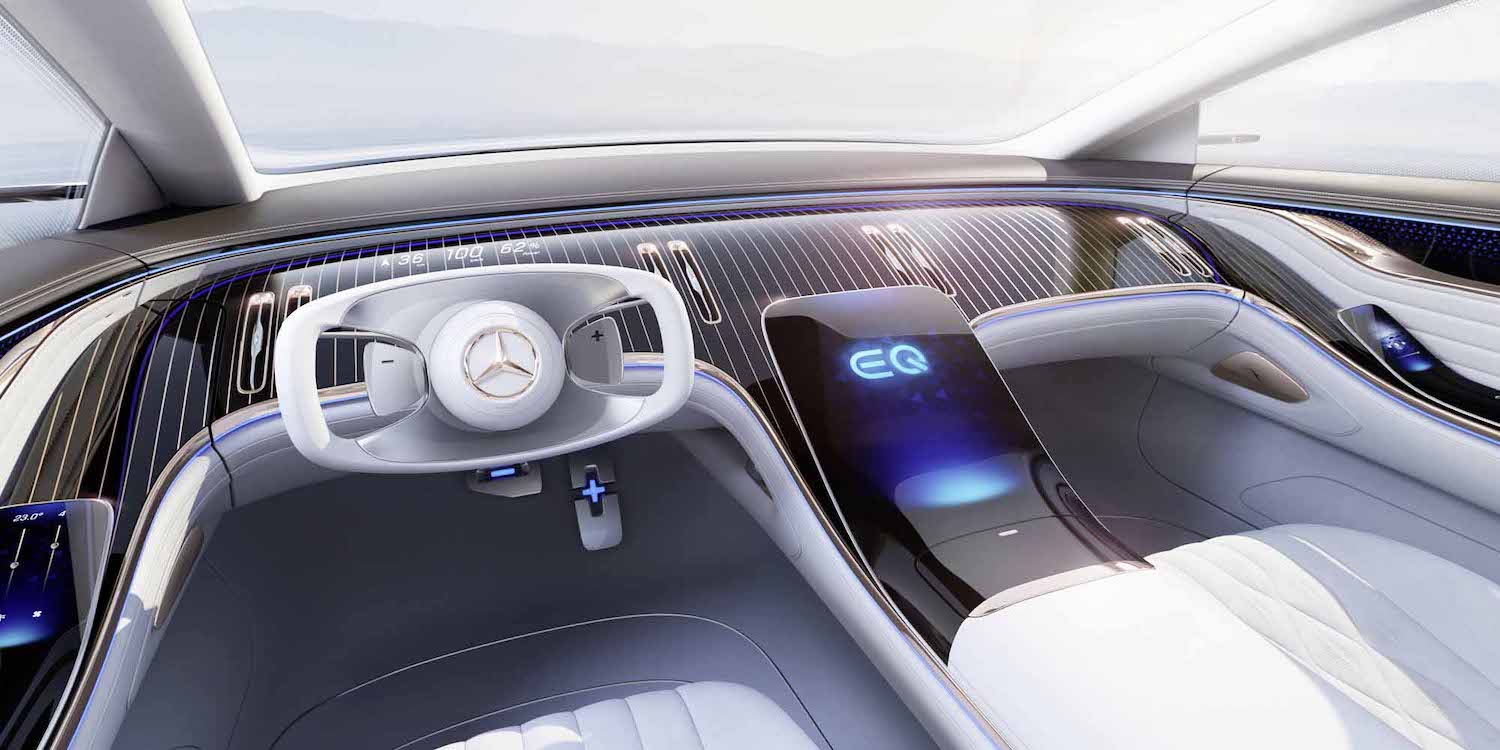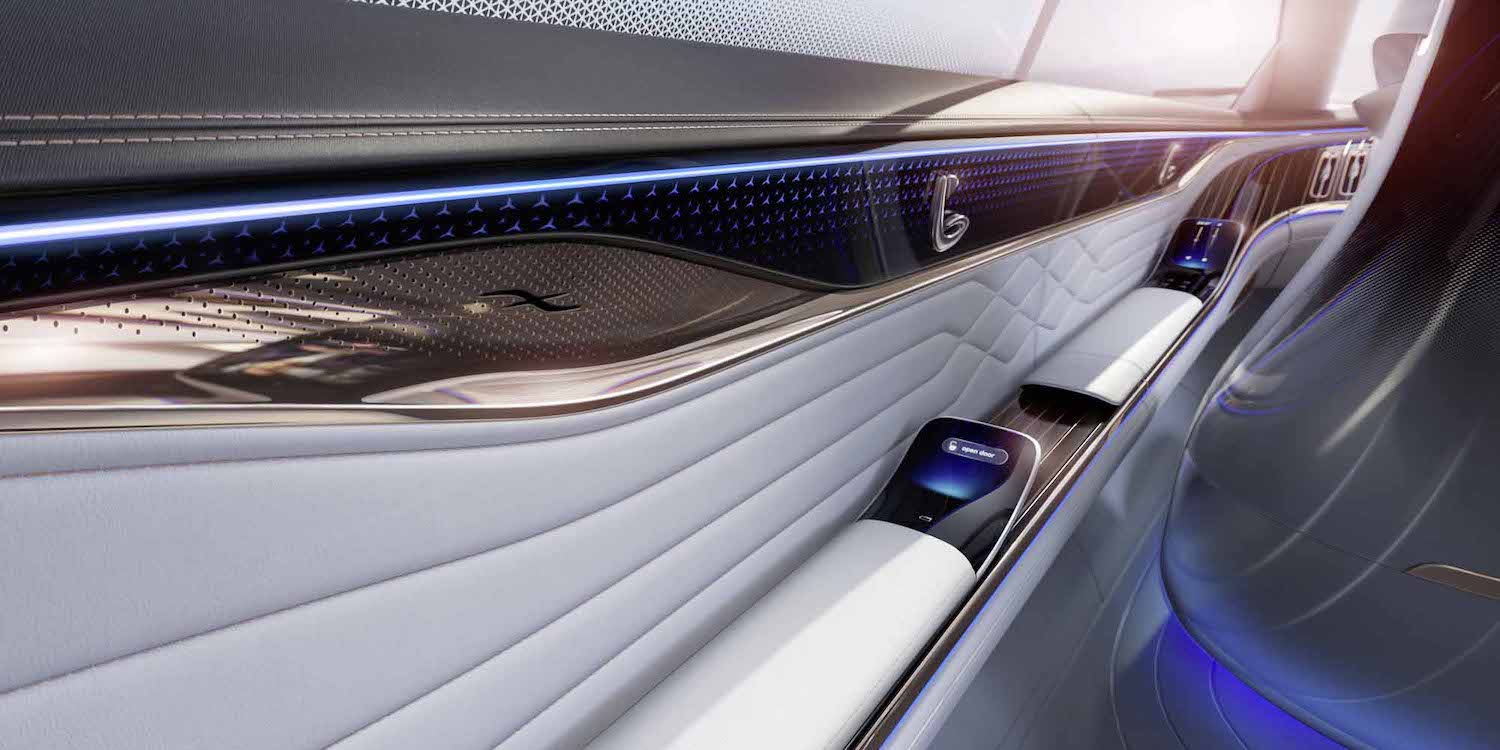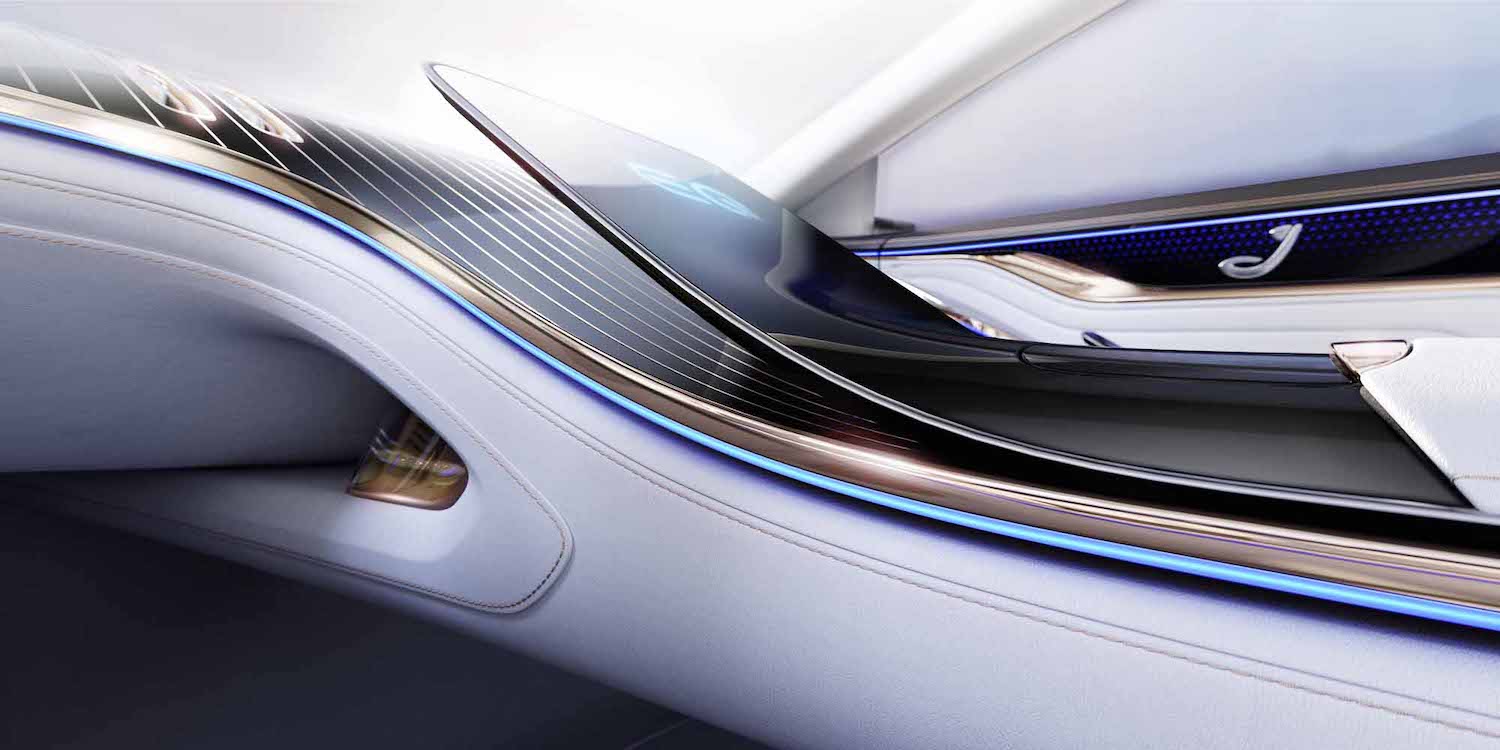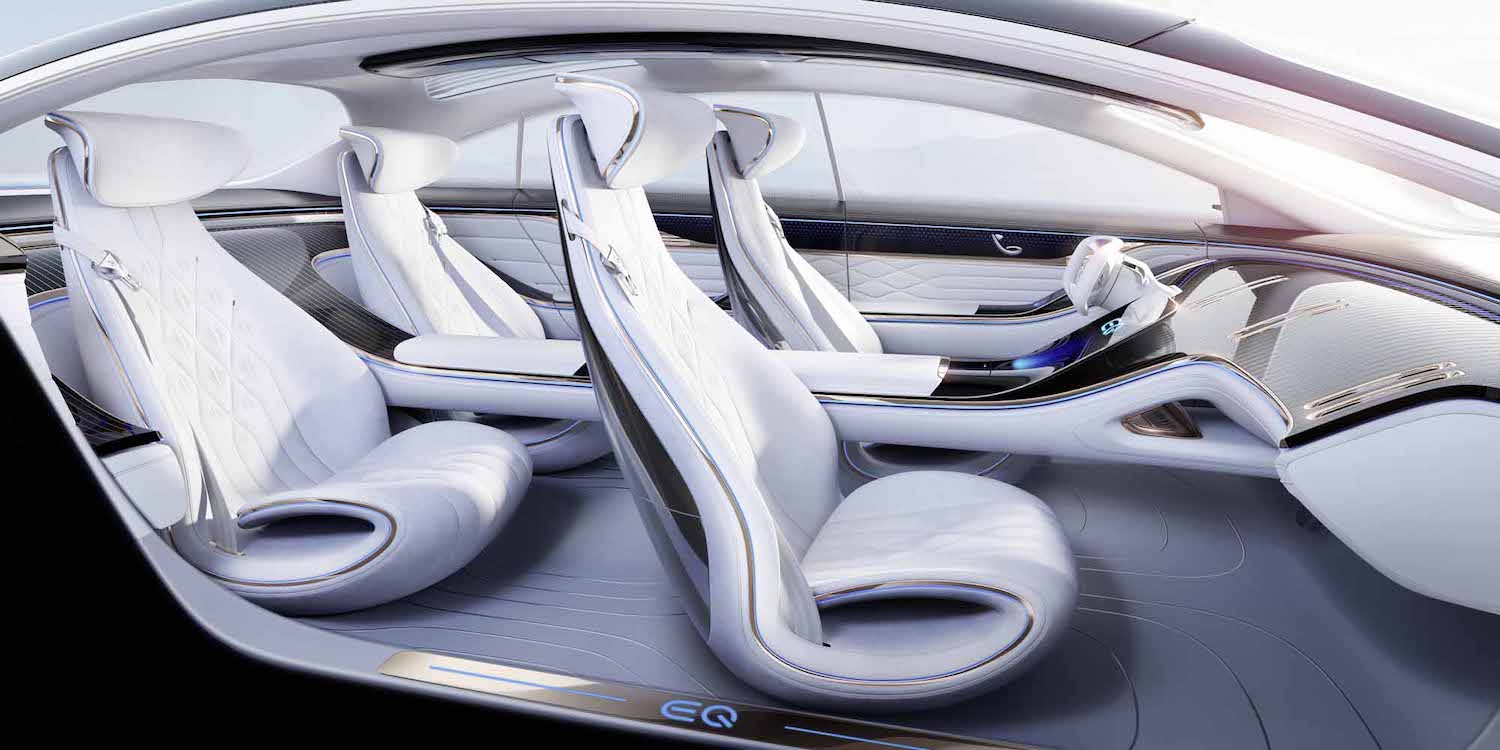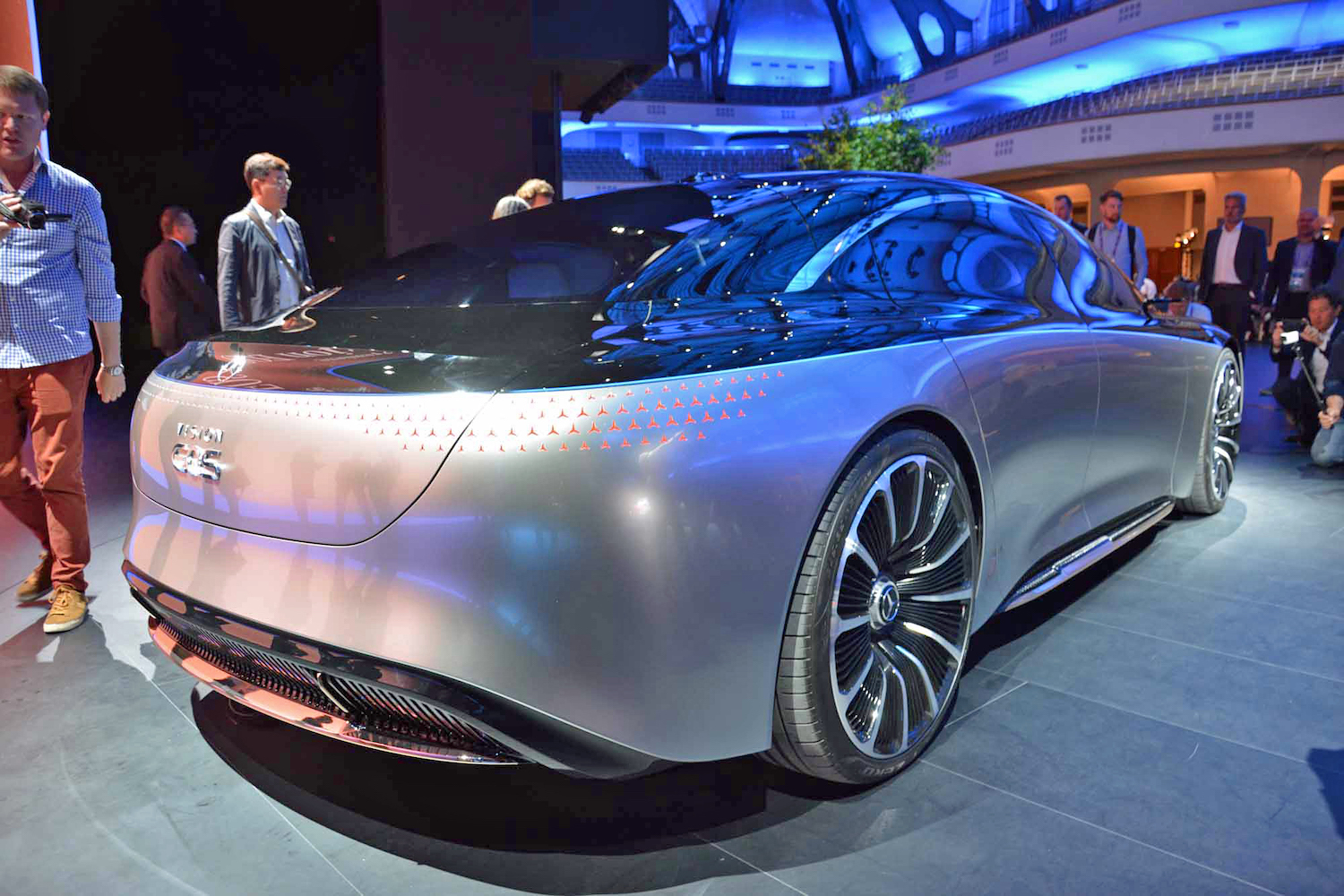The Mercedes-Benz Vision EQS concept previews an electrified alternative to the S-Class
If I had a dollar for every time I heard the phrase “the future is electric” while wandering through the Frankfurt auto show, I’d have enough money to buy a mine and get filthy rich selling minerals to battery manufacturers. EVs ruled this year’s show, and most came from German manufacturers.
The Porsche Taycan was no longer new by the time the event opened its doors to the media on September 10. It made its debut a week before the show during a standalone event in Canada, and Porsche showed it at the massive Volkswagen Group Night held on the eve of the first press day.
Instead, all eyes were turned to the Mercedes-Benz Vision EQS concept, a curvaceous, low-slung sedan decked out with over 1000 lighting elements. 940 of those live on the front end, while an additional 229 LEDs stretch down the sides of the car and meet to form the rear lights. This technology turns heads on the auto show circuit; in the real world, it could communicate messages to other road users.
Mercedes-Benz quotes a zero-to-60-mph time of under 4.5 seconds thanks to a pair of motors that draw electricity from a lithium-ion battery pack sandwiched under the passenger compartment. The motors join forces to zap the four wheels with 469 horsepower and 560 pound-feet of torque. The EQS is merely a design study, of course, so those figures are largely hypothetical. Same goes for the 435-mile range, which was achieved using simulations, and the notoriously optimistic WLTP testing norm.
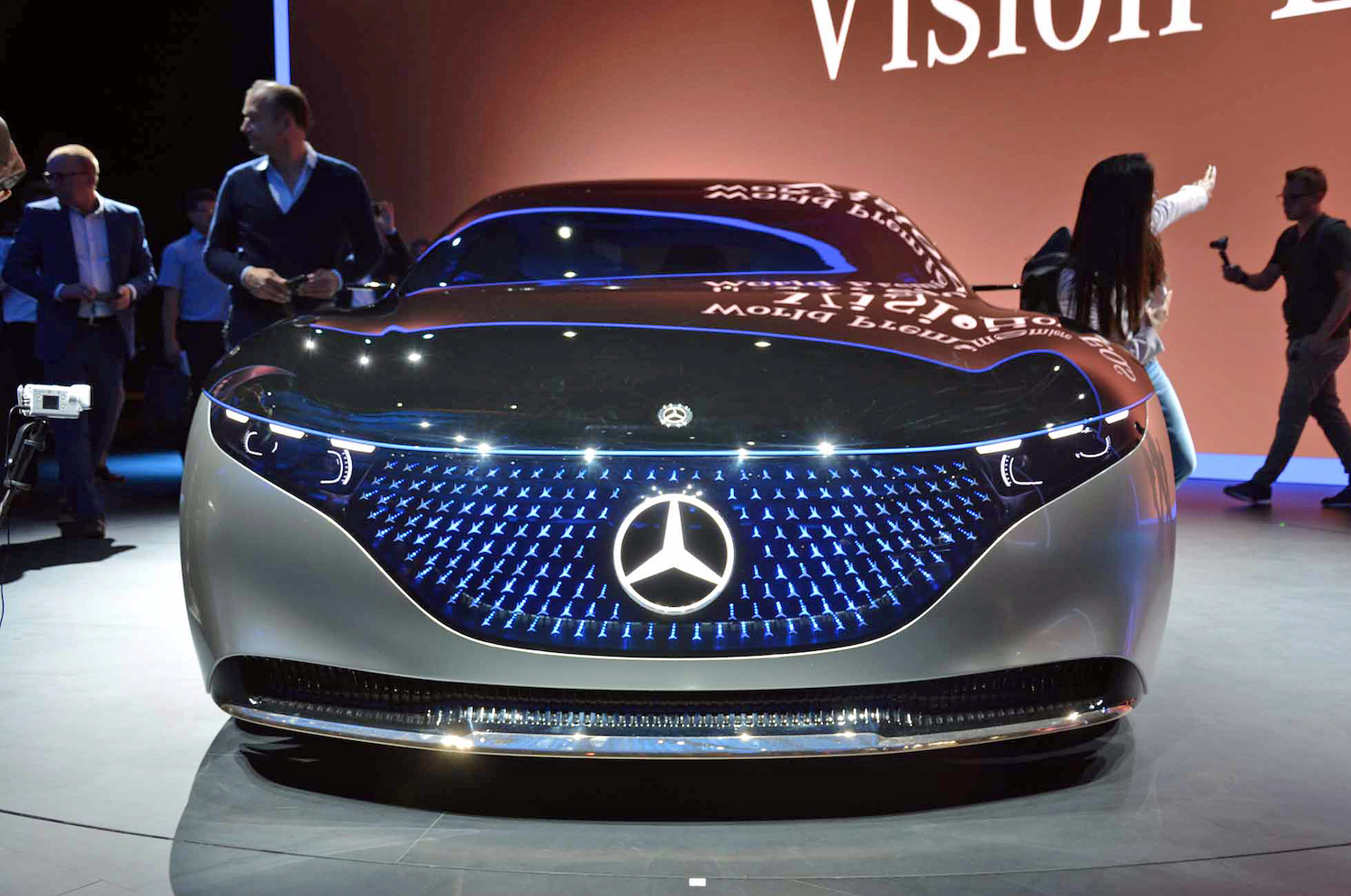
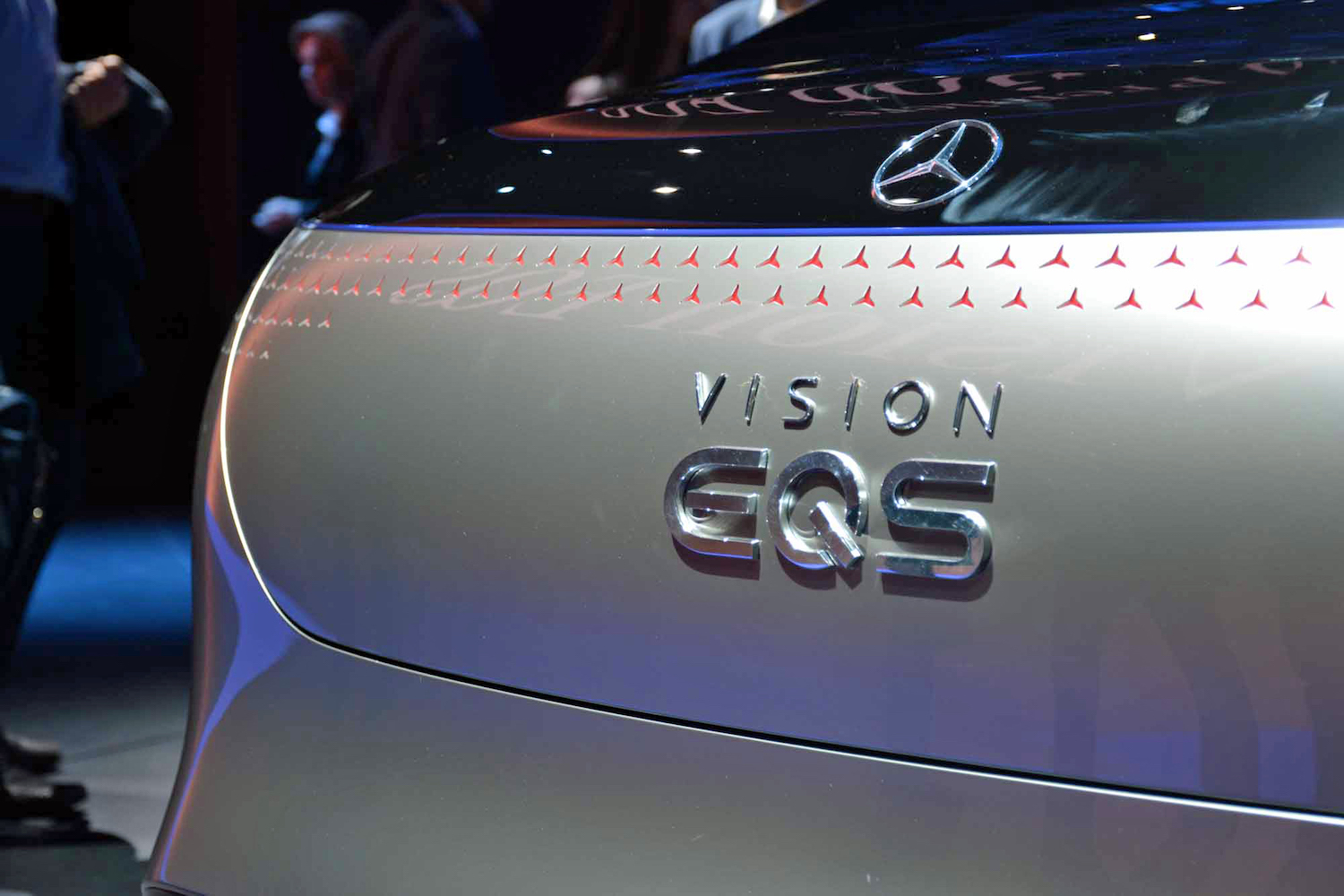

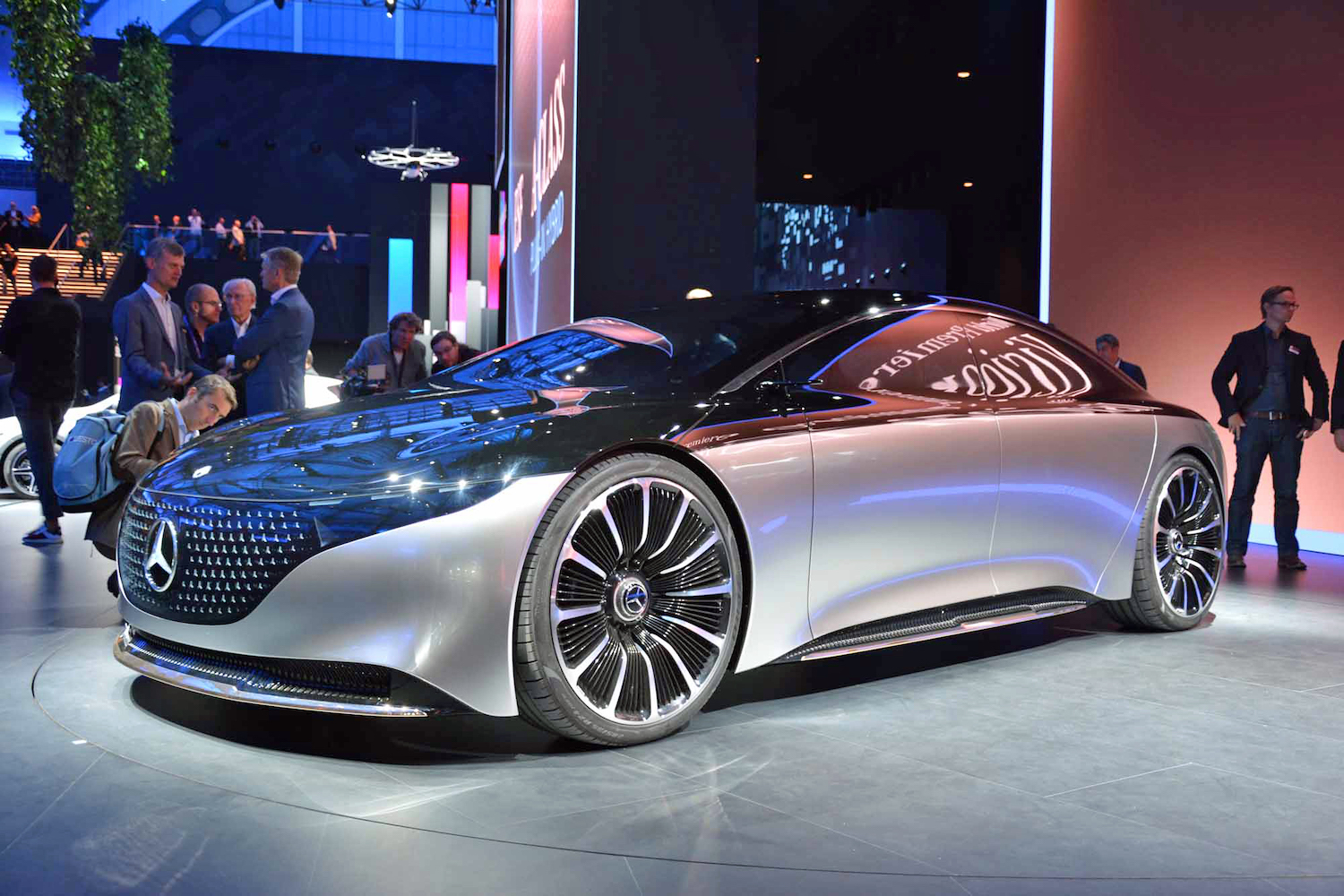
The battery-electric powertrain takes considerably less space than a comparable, six- or eight-cylinder engine, and the automatic transmission it’d inevitably shift through. Designers took advantage of this to carve out a spacious, lounge-like interior with more screens than seats. The EQS offers space for four passengers, and it features an evolution of the MBUX infotainment system found in recent additions to the company’s range, like the second-generation CLA, and the A-Class. In turn, motorists will be able to take advantage of the space by turning on the sedan’s Level 3 autonomous technology.
Officially, the Vision EQS is a concept car developed to turn heads in Frankfurt, and wherever else it shows up next. Behind the scenes, it’s already well on its way to production. It will join the company’s burgeoning range of EQ-badged models, which currently consists largely of the EQC, and it will be positioned as a battery-powered alternative to the S-Class.
Don’t expect the S to go away, though. It’s the gold standard of full-size luxury sedans and Mercedes isn’t about to abandon that position.
The next-generation S-Class is expected to make its debut in the early 2020s, right around when the EQS makes the leap from the show floor to the showroom floor. This customer-first approach will hopefully let buyers, not regulations, decide whether a Mercedes-Benz flagship needs a V-8, or maybe instead a battery the size of your dining room table. Volkswagen is following a similar strategy: the ID.3 made its debut in Frankfurt, and the eighth-generation Golf—which might probably won’t make it to America—will arrive by the end of 2019.
